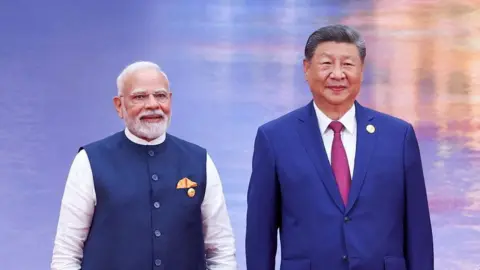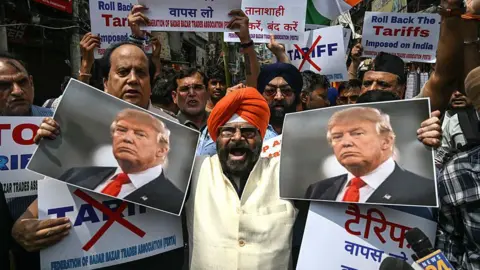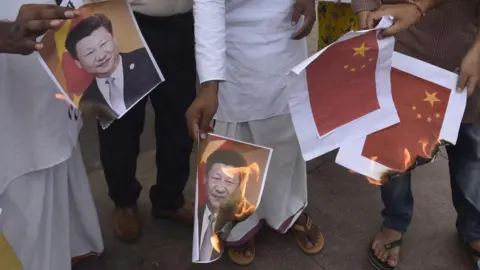Modi and Xi Meet in Tianjin as U.S. Tariffs Add Pressure on India
Leaders posed for photographs in a summit reshaped by recent India‑Pakistan clashes and Washington's punitive measures over New Delhi's Russian oil purchases.
Indian Prime Minister Narendra Modi and Chinese President Xi Jinping met in Tianjin on Monday in a summit that diplomats and analysts say was shaped as much by regional tensions as by geopolitical pressure from Washington.
The encounter, which included a formal photo opportunity, came after a series of developments that have complicated South Asian security dynamics: a brief but deadly exchange between Indian and Pakistani forces several months ago, reports of Beijing-supplied equipment used by Pakistan, and the Trump administration's recent imposition of steep tariffs on Indian imports.

The India-Pakistan clash earlier this year reinvigorated debate in New Delhi about relations with Beijing. Pakistani forces reportedly deployed China-made fighter jets and radar systems during the confrontation, and, according to a senior army officer in Delhi, Beijing provided "live inputs" to Pakistan on Indian positions. India did not publicly confront China at the time, but some officials and commentators questioned whether normalisation with Beijing was appropriate while concerns about Chinese support for Pakistan remained.
The timing of the Tianjin meeting was influenced by policy moves from Washington. The Trump administration has imposed 50% tariffs on a range of Indian imports, citing New Delhi's continued purchases of Russian oil. U.S. officials framed the tariffs as a punitive measure intended to curtail India's energy ties with Moscow. Faced with those penalties, New Delhi had to weigh whether to reduce Russian oil purchases or accept the economic hit; Indian leaders have maintained that Russia remains a longstanding security partner, a factor that shaped their decision-making.

Diplomatically, the meeting illustrated New Delhi's effort to manage multiple relationships simultaneously. India has deepening strategic and economic ties with the United States and has been careful to align with Washington on several regional issues. At the same time, it retains long-standing military and political links with Moscow and is pursuing a cautious détente with Beijing even as border frictions and concerns about Chinese support to Pakistan persist.
Analysts said the Tianjin encounter was pragmatic rather than symbolic: both capitals faced incentives to reduce tensions temporarily. For Beijing, stabilising ties with a major Asian power helps contain regional instability and maintains diplomatic channels amid broader global competition with the United States. For New Delhi, engagement with Beijing can temper cross-border risks and preserve space to pursue independent strategic choices, including those involving Russia.

The leaders left in place a complex set of competing pressures: unresolved border issues, questions in India about China’s role in Pakistan, and a new layer of economic coercion from Washington intended to influence New Delhi's energy ties with Moscow. The Tianjin meeting did not resolve these core disputes, but it did signal a mutual interest in managing them through diplomacy rather than escalation.
Observers said subsequent interactions, official statements and concrete follow-up measures will determine whether Monday's summit represents a turning point toward sustained rapprochement or a short-term de‑escalation. For now, the encounter underscores the balancing act facing New Delhi as it navigates relationships with Beijing, Moscow and Washington amid a shifting geopolitical landscape.